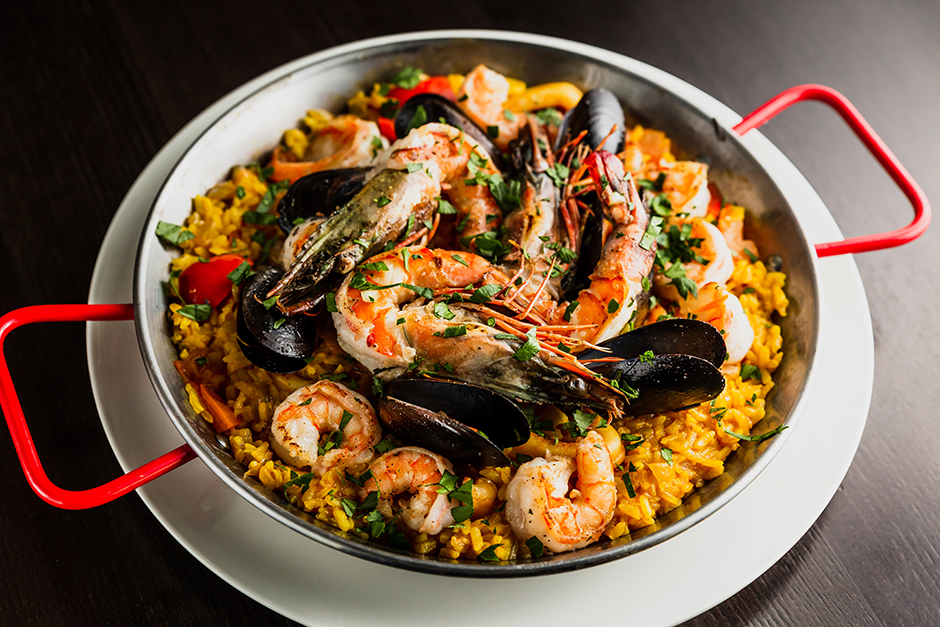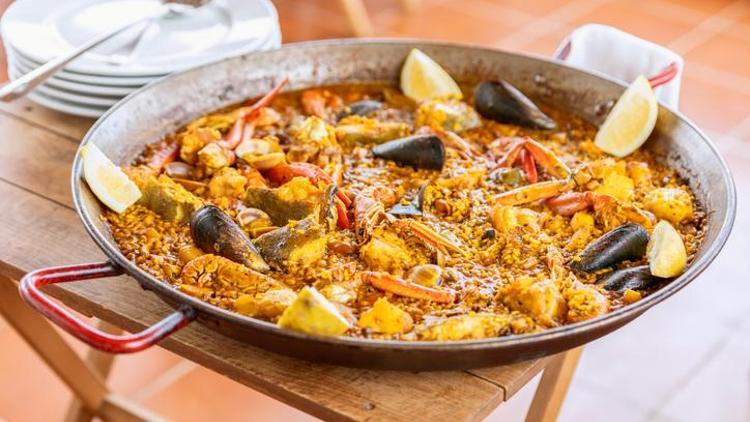Traditional Spanish Dish - Paella & Paella Recipe

Paella is a delicious and iconic dish that originated in the Valencia region of Spain. Its history is deeply rooted in the agricultural traditions and cultural influences of the area.
- Origins in Valencia:
Paella's roots can be traced back to the 18th century in the Valencia region on the eastern coast of Spain. The dish was born in the rural areas surrounding the Albufera lagoon, where rice paddies were abundant. The locals, especially farmers and laborers, created paella as a one-pot meal that combined rice with readily available ingredients.
- Evolution of Ingredients:
The original paella, known as "Valencian paella" or "paella Valenciana," featured ingredients commonly found in the region. This included rice, rabbit, chicken, snails, and a variety of local beans and vegetables. The use of saffron, a key spice, not only added flavor but also gave the rice its distinctive golden color.
- Diverse Variations:
Over time, as paella gained popularity both within and beyond Spain, different regions and communities began adapting the recipe to suit their local tastes and ingredient availability. Seafood paella, for instance, became popular in coastal areas, incorporating ingredients like shrimp, mussels, and squid.
- Cultural Influence:
The development of paella was influenced by various cultural factors, including the Moorish and Roman traditions that shaped the history of the Iberian Peninsula. The introduction of new ingredients and spices over the centuries enriched the dish and contributed to its diversity.
- Global Spread:
In the 20th century, with increased tourism and global interest in Spanish cuisine, paella gained international fame. Chefs and home cooks around the world embraced the dish, experimenting with ingredients and techniques. However, it's important to note that traditional paella remains deeply rooted in its Valencian origins.
- Cooking Techniques:
The preparation of paella involves cooking the ingredients in a wide, shallow pan called a "paellera" over an open flame. This allows for the development of the coveted socarrat, a caramelized layer of rice at the bottom of the pan, which adds depth of flavor and texture to the dish.
- Cultural Symbolism:
Paella has become more than just a meal; it's a symbol of Spanish culinary heritage and conviviality. It is often enjoyed in a communal setting, bringing people together for shared meals and celebrations.
In summary, paella's history is a rich tapestry of agricultural traditions, cultural influences, and regional adaptations. While it has evolved over the centuries, the essence of paella remains deeply connected to its Valencian roots and continues to be a beloved dish enjoyed worldwide.
:max_bytes(150000):strip_icc()/SES-seafood-paella-recipe-7106702-hero-01-de73366ad4a64c61924627ee870eabad.jpg)
Basic Traditional Valencian Paella Recipe:
Ingredients:
- 2 cups bomba or short-grain rice
- 4 cups chicken broth
- 1 lb chicken thighs, cut into bite-sized pieces
- 1/2 lb rabbit meat, cut into bite-sized pieces (optional)
- 1/2 lb green beans, trimmed and cut into 2-inch pieces
- 1 large tomato, grated
- 1/2 cup white beans (such as lima beans or butter beans)
- 1/2 cup artichoke hearts, quartered (fresh or canned)
- 1/2 cup roasted red peppers, sliced
- 1/2 cup green peas (fresh or frozen)
- 1 onion, finely chopped
- 4 cloves garlic, minced
- 1/2 teaspoon saffron threads
- 1 teaspoon sweet paprika
- Olive oil
- Salt and pepper to taste
- Lemon wedges for serving
Instructions:
- Prepare the Broth:
- In a saucepan, heat the chicken broth. Add saffron threads to the broth and let it steep.
- Season and Sear the Meat:
- Season the chicken and rabbit pieces with salt, pepper, and paprika.
- In a paellera or a wide, shallow pan, heat olive oil over medium heat. Add the chicken and rabbit pieces and brown them on all sides. Remove and set aside.
- Sauté Vegetables:
- In the same pan, add a bit more olive oil if needed. Sauté the chopped onion until translucent.
- Add minced garlic and grated tomato. Cook until the tomato has reduced and the mixture is fragrant.
- Add Rice:
- Stir in the rice, ensuring it's well-coated with the tomato mixture.
- Combine Ingredients:
- Pour in the saffron-infused broth. Add the browned chicken and rabbit back into the pan.
- Arrange the green beans, white beans, artichoke hearts, roasted red peppers, and green peas evenly in the pan.
- Simmer:
- Bring the mixture to a boil, then reduce the heat to a simmer. Allow it to cook without stirring. If necessary, add more broth during the cooking process to keep the rice moist.
- Develop Socarrat:
- Toward the end of the cooking time, increase the heat to develop the socarrat - the crispy layer of rice at the bottom. This should take about 5-10 minutes. You'll hear a crackling sound, indicating the socarrat is forming.
- Rest and Serve:
- Once the rice is cooked, remove the paella from the heat and let it rest for a few minutes.
- Serve the paella with lemon wedges on the side for squeezing over the dish.
Enjoy your homemade paella! Remember, this is a basic recipe, and you can experiment with different ingredients based on your taste preferences.
I recommend you to watch Paella recipe videos that I share below;
Spanish Paella Recipe;
Spanish Seafood Paella Recipe;
Paella Recipe;
Seafood Paella Recipe;
Spanish Paella Recipe + Chicken & Prawns;
References;
- ^ "paella". Lexico UK English Dictionary. Oxford University Press. Archived from the original on 22 March 2020.
- "paella". Merriam-Webster's Collegiate Dictionary. Merriam-Webster, Inc. Retrieved 16 January 2022.
- ^ "Paella, on the way to becoming a World Heritage Site". Generalitat Valenciana. Retrieved 19 February 2020. For the Region of Valencia, paella is much more than a recipe, it is a ritual and an icon of our culture.
- Panadero, Amparo (11 March 2019). "La paella valenciana quiere ser Patrimonio de la Humanidad". Diario16 (in Spanish). Retrieved 19 February 2020. En el caso de la paella valenciana, se trata de una tradición culinaria y social que constituye un icono de hospitalidad y un símbolo de unión e identidad valencianas ...
- "Info about Paella on About.com". Spanishfood.about.com. 15 December 2009. Retrieved 19 February 2010.
Thank you for reading and sharing your time!
#food #seafood #spanish #paella #cuisine #yummy #foodlove #foodinspiration #cooking
























































